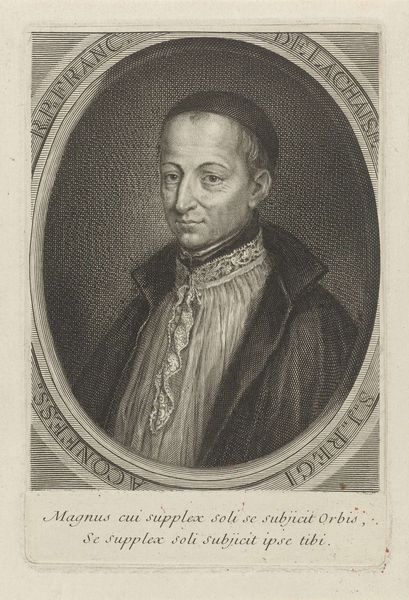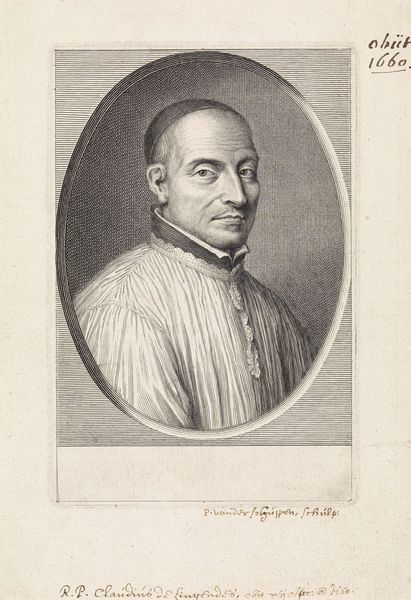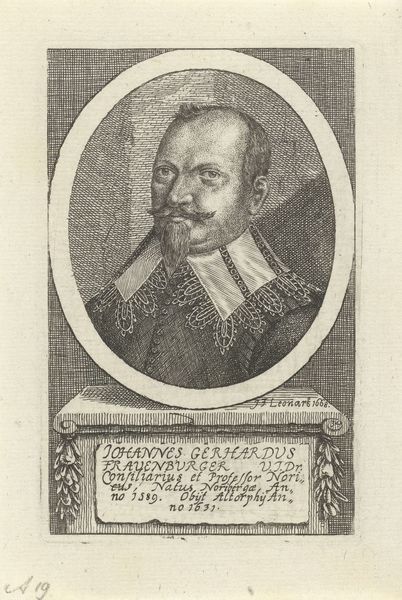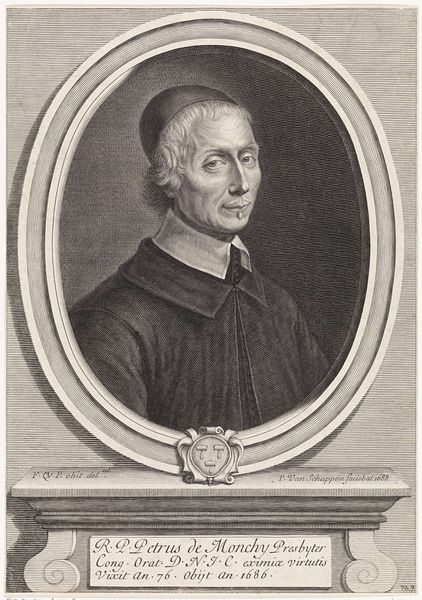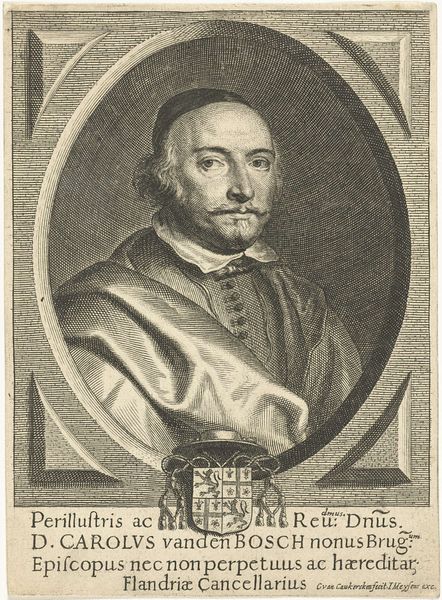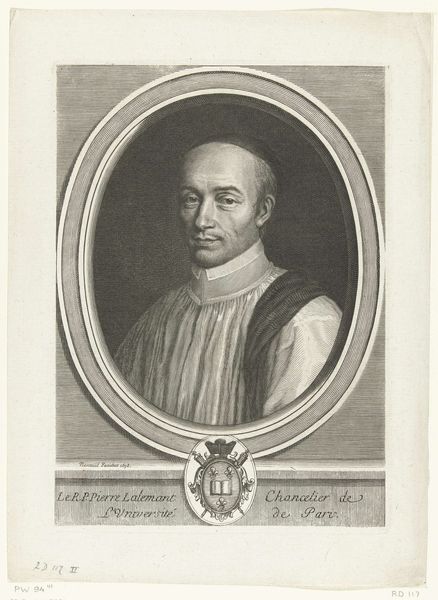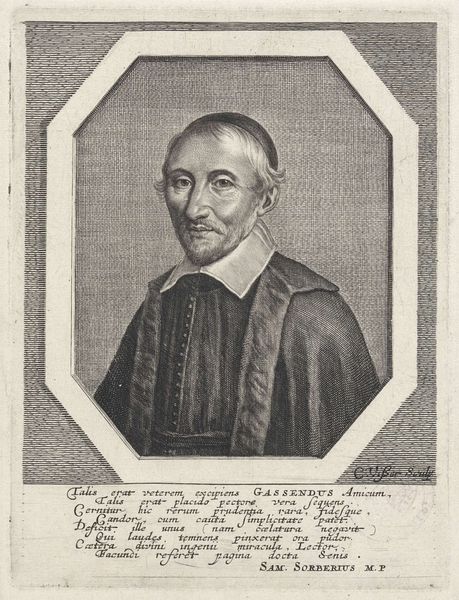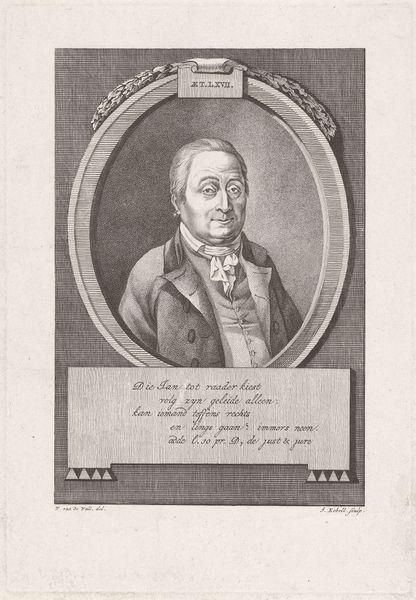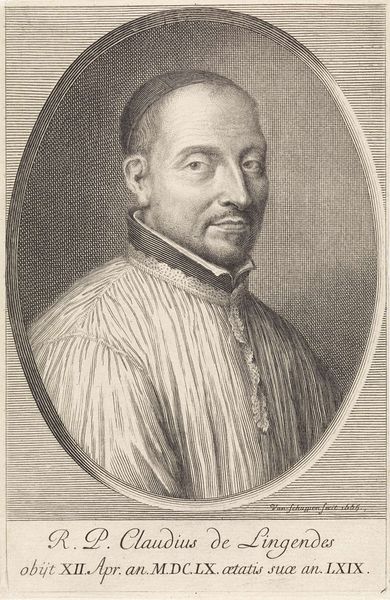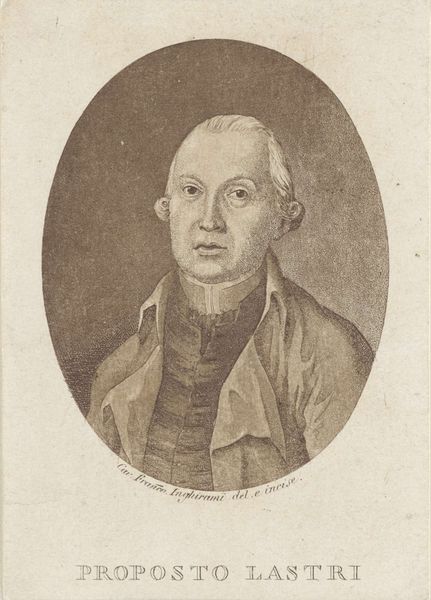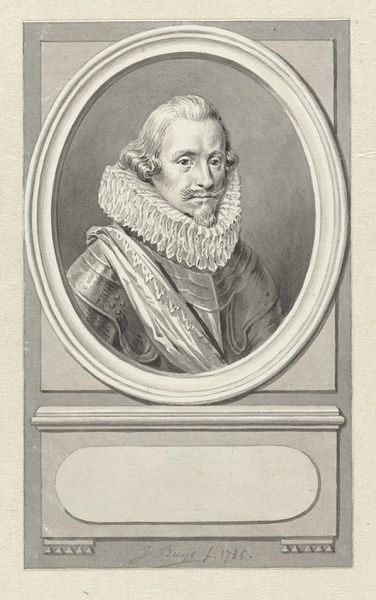
print, engraving
#
portrait
#
baroque
# print
#
old engraving style
#
portrait reference
#
19th century
#
portrait drawing
#
engraving
Dimensions: height 169 mm, width 120 mm
Copyright: Rijks Museum: Open Domain
Curator: There's a certain starkness to this, isn't there? Very direct, almost confrontational, in its quiet way. It pulls you in close. Editor: Indeed. What we're looking at is an 18th-century print. More specifically, it's an engraving entitled "Portret van geestelijke Luigi la Nuza," which translates to "Portrait of the clergyman Luigi la Nuza." The piece is credited to Gennaro Guttierez. Curator: Guttierez really captured something in his face. A weariness, but also... acceptance? Is it too much to say almost a luminous quality despite the somber tones? There is serenity in his eyes that balances the aging face. Editor: Baroque portraiture frequently presented its subjects in a light intended to showcase power, knowledge, or grace. Engravings like this circulated images and concepts far beyond where a painted portrait could reach, expanding the sitter's legacy and their represented virtues into wider public and social consciousness. The inscriptions tell us he was considered the Apostle of the Casa Professa and died a holy man in Palermo. These elements amplify and solidify his importance within a specific cultural and religious framework. Curator: It feels incredibly personal, though, doesn't it? Even across centuries, that vulnerability pierces through. To be memorialized in this way must have taken a huge degree of self assurance and humilty, which is really inspiring, and Guttierez masterfully translates these for all time. Editor: And notice the very deliberate framing of La Nuza. He is enshrined within an oval frame and bordered above and below by scrolls of Latin text. His belonging is claimed within carefully placed visual parameters that serve a rhetorical and functional purpose within the society and social group the print was produced for. It underscores that portraits like these performed explicit social roles. Curator: Yes, it's a record, absolutely a historical artifact—and yet it is just such a beautiful testament to a shared human experience. That's what grabs me. I find the balance fascinating. Editor: I think you've pinpointed what makes it linger in the memory. Curator: Agreed. Something to meditate on.
Comments
No comments
Be the first to comment and join the conversation on the ultimate creative platform.
